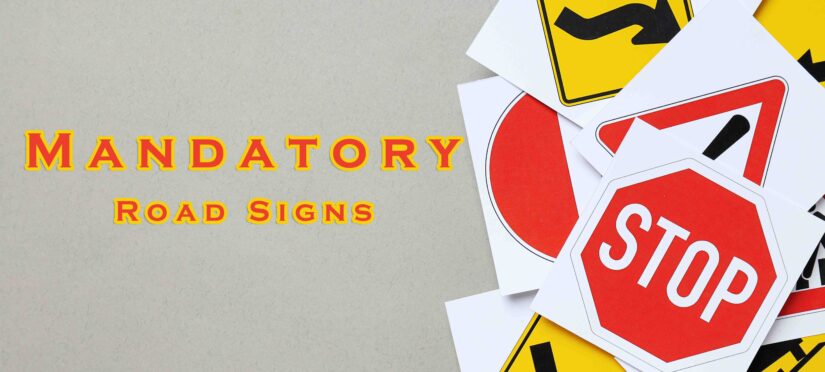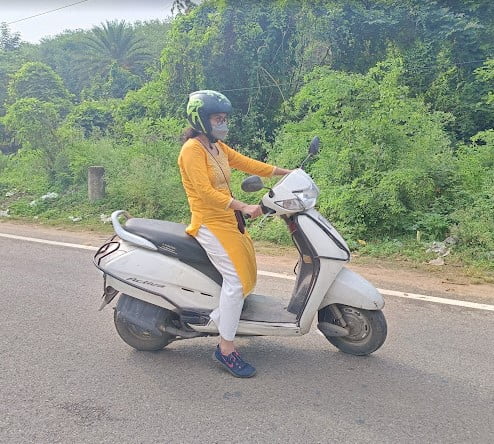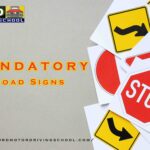Driving in India requires not only skill but also a keen understanding of road signs. These signs serve as crucial communication tools, guiding drivers and ensuring road safety. Let’s delve into the essential road signs you need to know to navigate India’s roads safely and confidently.
STOP Sign: This red octagonal sign with white letters demands immediate attention from drivers. It signifies the need to come to a complete halt before proceeding. By obeying this sign, drivers can ensure safety at intersections and prevent collisions.
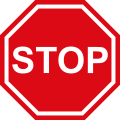
GIVE WAY Sign: The “GIVE WAY” sign, often depicted as a downward-pointing triangle with the words “GIVE WAY” written in white, instructs drivers to yield the right-of-way to oncoming traffic or to vehicles on the intersecting road. This sign is crucial for maintaining smooth traffic flow, particularly at intersections or junctions where merging lanes occur.
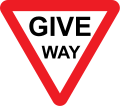
No Entry Sign: Displayed as a red circle with a white horizontal bar, this sign prohibits vehicles from entering specific roads or areas. Its presence is vital for maintaining traffic flow and preventing congestion.

One-Way Sign: Indicating traffic flow in a single direction, this sign reduces confusion and minimizes the risk of accidents. Drivers must adhere to the indicated direction to ensure smooth traffic movement.
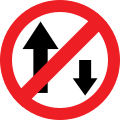
Vehicles Prohibited In Both Directions Sign: With a red circle and a white horizontal bar accompanied by a diagonal line, this sign indicates areas where all vehicles are prohibited from entering. Adhering to this sign is essential for road safety.
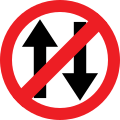
All Motor Vehicles Prohibited Sign: Featuring a red circle with a black symbol of a car crossed out, this sign prohibits all motor vehicles from entering designated areas. It helps regulate traffic and ensure pedestrian safety.
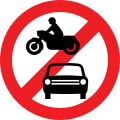
Trucks Prohibited Sign: Displaying a red circle with a black truck symbol crossed out, this sign indicates areas where trucks are not allowed to enter. Compliance with this sign is crucial for maintaining road infrastructure.
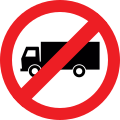
Bullock Carts and Hand Carts Prohibited Sign: This sign prohibits the entry of bullock carts and hand carts into specified areas. It plays a vital role in regulating traffic and ensuring safety for all road users.
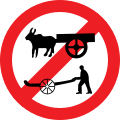
Tongas Prohibited Sign: Prohibiting the entry of horse-drawn carriages, this sign maintains modern traffic standards and prevents conflicts with motor vehicles.
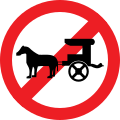
Hand Carts Prohibited Sign: Similar to the previous sign, this one specifically targets hand carts, restricting their entry into designated areas for enhanced traffic management.

Cycle Prohibited Sign: Indicating areas where bicycles or cycles are not allowed, this sign ensures the safety of cyclists and prevents potential accidents.
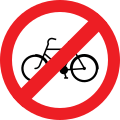
Pedestrians Prohibited Sign: This sign communicates the restriction on pedestrian entry into specified areas, directing pedestrian traffic and enhancing overall safety.
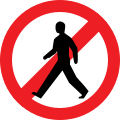
Right Turn Prohibited Sign: The “Right Turn Prohibited” sign, typically portrayed as a red circle with a black arrow pointing right and a diagonal line across it, indicates that vehicles are not permitted to make right turns at the specified location. This sign is strategically placed at intersections or junctions where making a right turn could lead to congestion, safety hazards, or disrupt the flow of traffic.
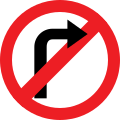
Left Turn Prohibited Sign: The “Left Turn Prohibited” sign, commonly represented as a red circle with a black arrow pointing left and a diagonal line through it, signifies that vehicles are prohibited from making left turns at the designated location. This sign is strategically placed at intersections or junctions where left turns could pose safety risks, cause congestion, or disrupt traffic flow.
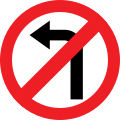
U-turn Prohibited Sign: Preventing U-turns at designated locations, this sign is instrumental in preventing accidents and improving traffic efficiency.
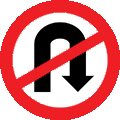
Overtaking Prohibited Sign: Indicating areas where overtaking other vehicles is prohibited, this sign reduces the risk of accidents and promotes safer driving practices.
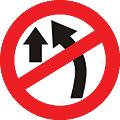
Horns Prohibited Sign: Prohibiting the use of horns in designated areas, this sign contributes to noise reduction and promotes a peaceful driving environment.
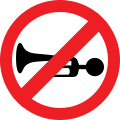
No Parking Sign: Designating areas where parking is prohibited, this sign ensures smooth traffic flow and maintains accessibility for emergency vehicles.
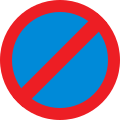
No Stopping or Standing Sign: Similar to the no parking sign, this one restricts stopping or standing of vehicles to prevent congestion and ensure safety.
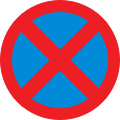
Speed Limit Sign: Displaying maximum allowable speeds, these signs are essential for promoting safe driving practices and reducing the risk of accidents. For Ex. 50, 20, 60, 40 etc.
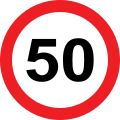
Axle Load Limit Signs: The “Axle Load Limit Signs” sign, often depicted with a black symbol of a vehicle carrying a load, accompanied by a specified weight limit, informs drivers of the maximum permissible weight that vehicles can carry on a particular road or bridge. This sign is crucial for preventing overloading, which can lead to accidents, road damage, and compromised infrastructure integrity.
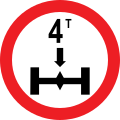
Height Limit Sign: The “Height Limit” sign, often depicted with a symbol indicating a maximum permissible height for vehicles, serves as a crucial warning for drivers about overhead clearance restrictions on roads, bridges, or underpasses. This sign aims to prevent accidents caused by vehicles exceeding the specified height limit, which may collide with overhead structures, causing damage and posing risks to safety. By adhering to the height limit sign, drivers ensure safe passage and minimize the potential for accidents and infrastructure damage.
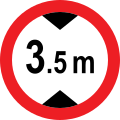
Length Limit Sign: The “Length Limit” sign, typically depicted with a symbol indicating a maximum allowable vehicle length, informs drivers of restrictions on vehicle length for certain roads or bridges. This sign plays a crucial role in preventing accidents and maintaining road safety by minimizing the risk of collisions, especially in areas with limited space or tight turns. By adhering to the length limit indicated on this sign, drivers contribute to safer road conditions for themselves and other road users.
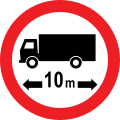
Width Limit Sign: The “Width Limit” sign, often portrayed with a symbol indicating the maximum allowable width for vehicles, serves as a vital warning for drivers about width restrictions on certain roads or bridges. This sign aims to prevent accidents caused by vehicles exceeding the specified width limit, which could lead to collisions with obstacles or adjacent vehicles. By adhering to the width limit sign, drivers ensure safe passage and minimize the risk of accidents, particularly in narrow passages or congested areas.
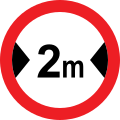
Compulsory Bus Stop Sign: Marking compulsory bus stop locations, this sign ensures efficient public transportation services and enhances overall transit experience.
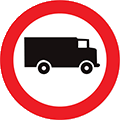
Compulsory Cycle Track Sign: Indicating dedicated cycle tracks, this sign promotes cycling as a safe and sustainable mode of transportation.

Compulsory Ahead Or Turn Left/Right Sign: This sign directs vehicles to proceed straight ahead or make designated turns, contributing to smooth traffic flow and safety.
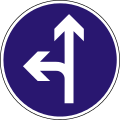
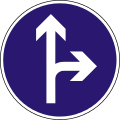
Compulsory Sound Horn Sign: Placed at intersections or blind curves, this sign mandates the sounding of horns to alert other road users, enhancing safety.

Compulsory Turn Right/Left Ahead Sign: The “Compulsory Turn Right/Left Ahead” sign, commonly depicted as a white arrow indicating the mandatory direction to turn (either right or left) along with the word “AHEAD,” serves to direct drivers on the required course of action at upcoming intersections or junctions. This sign ensures smooth traffic flow and helps prevent confusion among drivers by clearly indicating the designated turning direction.
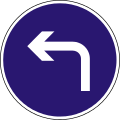
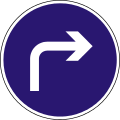
Compulsory Turn Right/Left Sign: The “Compulsory Turn Right/Left” sign, featuring a white arrow indicating the mandatory direction to turn (either right or left), serves as a directive for drivers approaching specific intersections or junctions.
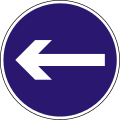

Compulsory Keep Right/Left Signs: The “Compulsory Keep Right/Left” signs feature arrows pointing to the right or left. These signs are strategically placed at points where the road splits or diverges, ensuring that drivers follow the designated path to maintain smooth traffic flow and prevent congestion.
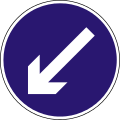
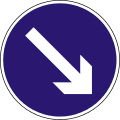
Compulsory Minimum Speed Sign: The “Compulsory Minimum Speed” sign signifies the mandated minimum speed that drivers must maintain on a particular stretch of road or highway. This sign is crucial for ensuring consistent traffic flow and preventing hazards associated with slow-moving vehicles impeding the progression of other drivers. By adhering to the compulsory minimum speed sign, motorists contribute to safer and more efficient travel on the roadway.

Dear reader, if this information is useful to you, please share this article and leave a comment. Thank you for reading.

